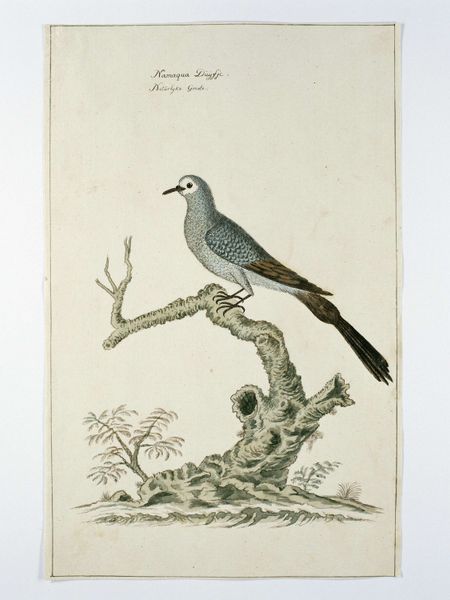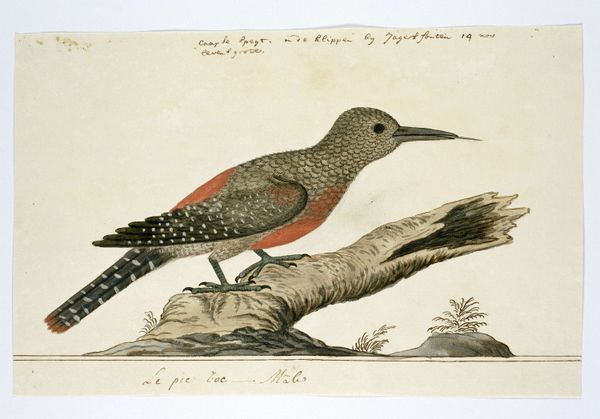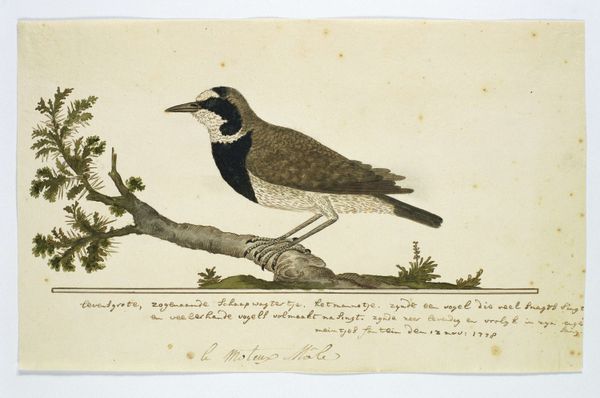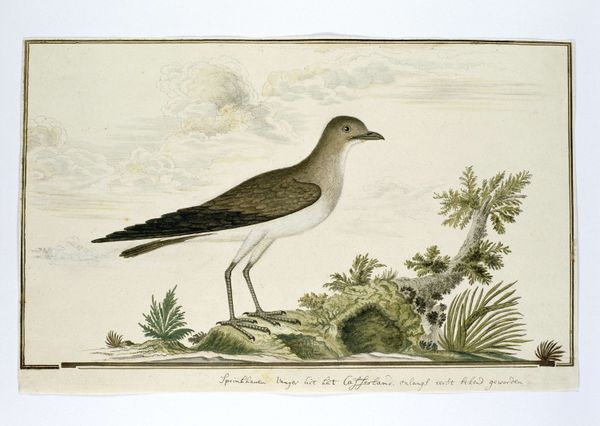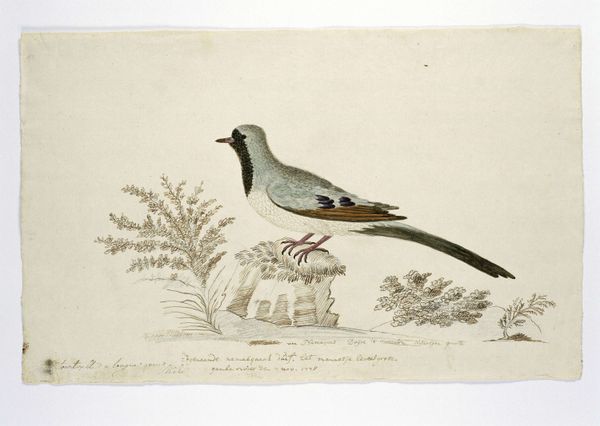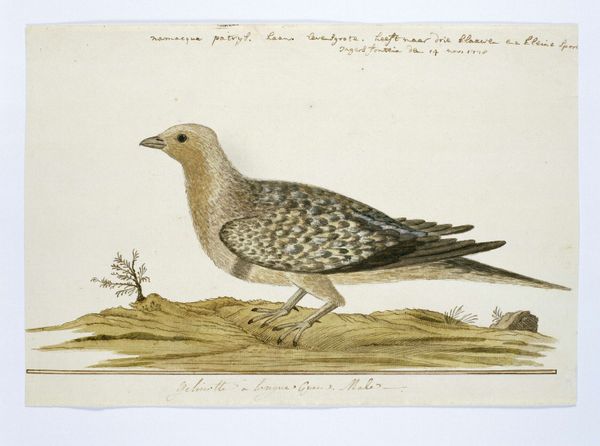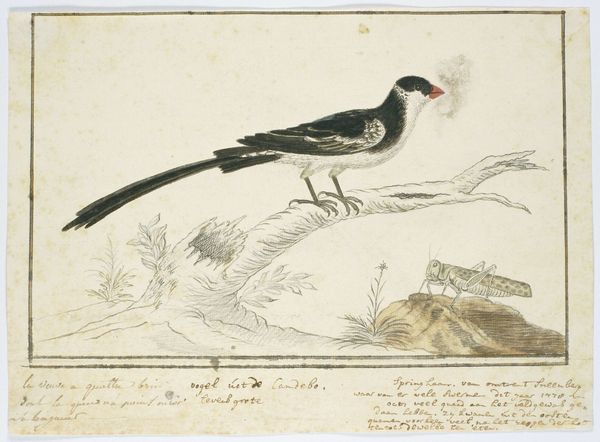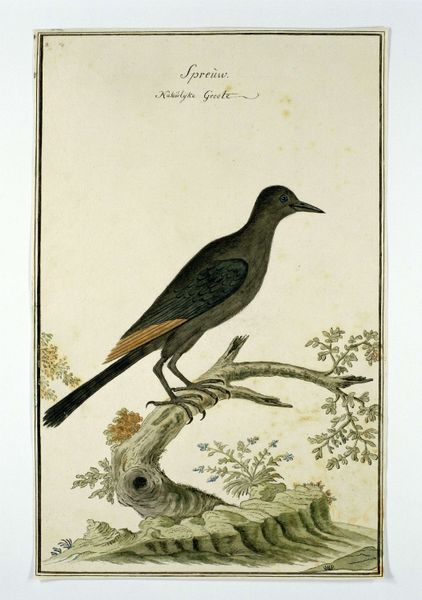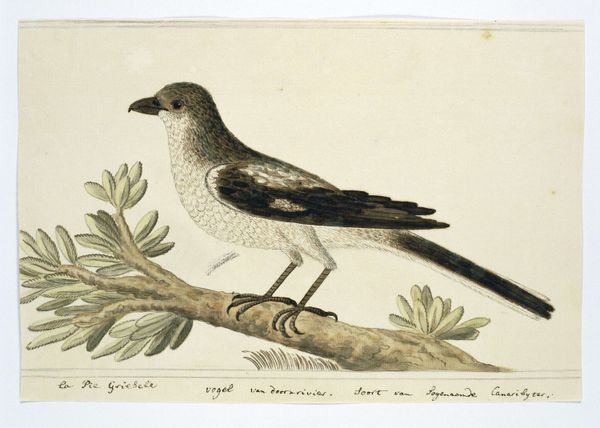
Dendropicos fuscescens (Cardinal woodpecker)and Estrilda astrild (Common waxbill) Possibly 1777 - 1786
0:00
0:00
drawing, watercolor
#
portrait
#
drawing
#
water colours
#
landscape
#
watercolor
#
watercolour illustration
#
naturalism
#
botanical art
#
watercolor
Dimensions: height 660 mm, width 480 mm, height 209 mm, width 327 mm, height 170 mm, width 327 mm
Copyright: Rijks Museum: Open Domain
Curator: This delicate watercolor drawing presents us with two bird species, a Cardinal woodpecker and a Common waxbill. It is attributed to Robert Jacob Gordon and likely dates between 1777 and 1786. Editor: The colours are really soft. Almost like a faded memory, don’t you think? But I find something enchanting in the quietness of the piece, you know? A kind of gentle hum. Curator: Indeed. Gordon was a military officer and explorer, and his artistic endeavors, particularly his depictions of the natural world, offer invaluable insights into the colonial gaze and the scientific explorations of the time. The meticulous rendering speaks volumes about his commitment to detail, mirroring the broader scientific impulse to document and classify. Editor: I wonder what these little fellas were thinking, perched in their watery world! Imagine being stuck forever on someone’s paper, you know? They are so neatly framed; they appear posed, frozen. They must dream of breaking away, and painting a few chaotic brushstrokes in their little worlds. Curator: It's fascinating to consider the power dynamics embedded within such images. While seemingly objective, the act of representation always involves selection, interpretation, and, perhaps, even a degree of appropriation. We must question what the creation and study of this image tells us about the scientific and political imperatives that underscored 18th-century European expansion. Editor: So true. I imagine Gordon capturing not just their physical appearance, but somehow trapping a little bit of their soul... Well, not that he meant any harm! But there is melancholy here too: something about the artist's act, always trying to preserve fleeting beauty. We all wish we could capture what cannot be held, right? Curator: Precisely. Understanding these historical and social dimensions allows us to see the artwork not just as a record of avian species, but as a window onto the complex interactions between science, colonialism, and the environment. Editor: Makes you wonder where those birds, or their descendants, are right now. Fleeting glimpses, indeed!
Comments
No comments
Be the first to comment and join the conversation on the ultimate creative platform.
